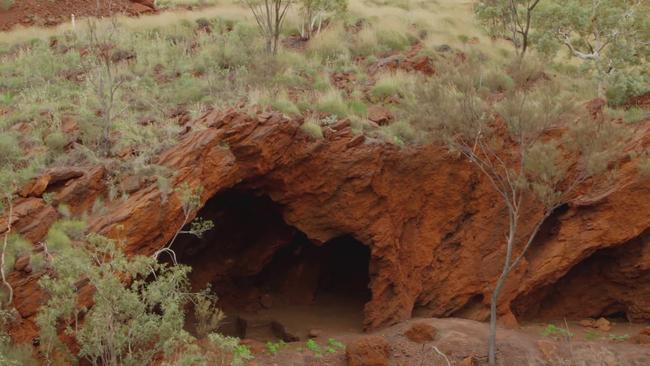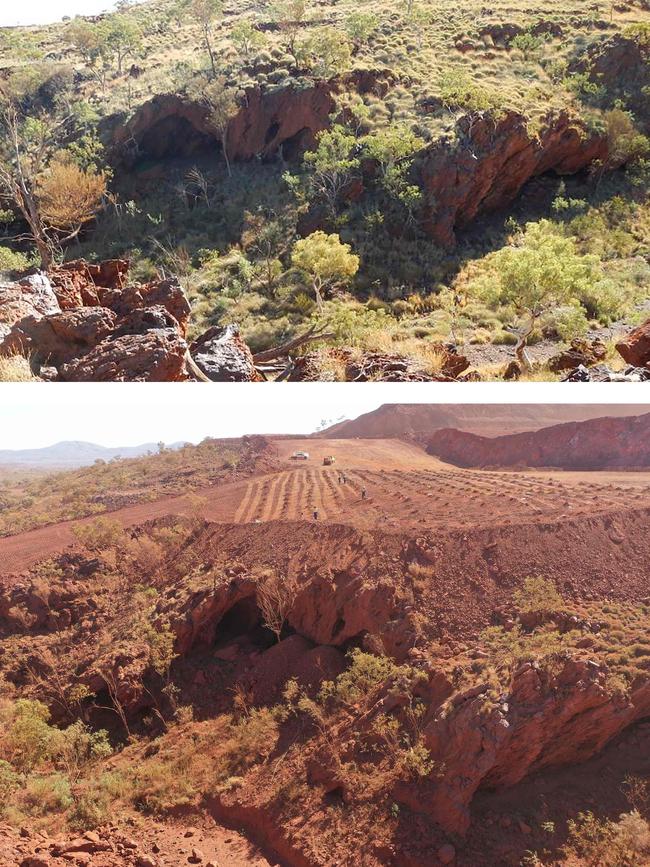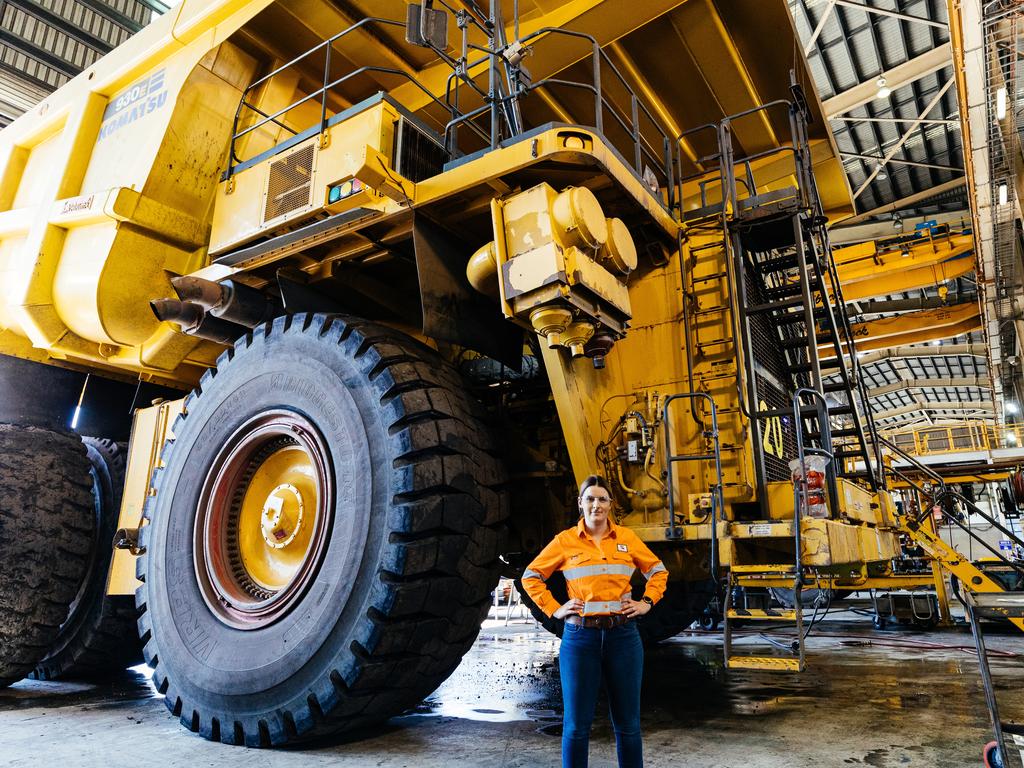Rio Tinto ‘knew Juukan caves significant’ when given blast permission
Rio Tinto and the Puutu Kunti Kurrama and Pinikura people were well aware of the historical significance of the Juukan Gorge caves.

Rio Tinto and the Puutu Kunti Kurrama and Pinikura people were well aware of the historical significance of the Juukan Gorge caves at the time the mining giant sought and obtained government approval for the caves’ destruction.
Documents obtained by The Australian under Freedom of Information legislation on Thursday show the PKKP had requested that Rio Tinto carry out a salvaging operation before the caves were destroyed, with Rio Tinto agreeing to the request.
The destruction of the caves in May set off a firestorm of controversy, with shareholder pressure on the Rio Tinto board leading to the resignation of CEO Jean-Sebastien Jacques and two other senior executives.
Legal approval for the destruction of the caves was given by the Aboriginal Cultural Materials Committee — a panel of Indigenous representatives and archaeology experts that advises Western Australia’s Aboriginal Affairs Minister on applications to destroy Indigenous sites — in December 2013 after it considered a host of factors including an absence of “specific ethnographic stories” relating to the area.

Advice given to WA’s then-Aboriginal affairs minister noted, under a section headed “contentious issues/points to consider”, that the PKKP had requested that items salvaged from the caves be moved to a safe area.
“Consultation was undertaken with representatives of the PKKP Native Title Group, who noted that the Land the subject of the Notice is significant, being part of the ‘Juukan’ area, due to extensive cultural material located within and the actual and potential traditional, historic and contemporary knowledge curatively stored at certain locations within the complex,” the advice said. “Those consulted requested that artefacts on the Land the subject of the Notice be relocated to nearby heritage place (Brock-25), which is located outside of the proposed mining area.
“They also requested that further salvage excavations occur …
“In response, the Applicant has advised that it will continue to consult with the PKKP and DAA about the appropriate salvage and display of cultural material.”
The documents confirm that Rio Tinto, the PKKP and the Minister were all aware that the caves showed signs of human habitation dating back at least 32,000 years and were of “high” archaeological significance even before the miner was given approval for their destruction.
Site summaries prepared by the Department of Indigenous Affairs as part of the Section 18 application detail how hundreds of artefacts — mostly rock flakes and animal bone fragments, as well as charcoal dated as almost 33,000 years old — had been recovered during an archaeological study of the caves.
“The author of the study … suggests that the initial investigations indicate this place is of high archaeological significance, being a rich assemblage of great antiquity with a large area of intact cultural deposits containing high densities of stone artefacts in association with faunal remains and hearths,” the summary says.
But under a section titled “points to consider”, the summary noted there was “no specific ethnographic historical knowledge” about the caves.
“Apart from the Aboriginal name of this place, ‘Juukan’, and that one of those consulted knew that their (redacted) had been born in the area, no specific ethnographic historical knowledge of the area in its entirety or (Brock-20) was provided.”

Notes from the ACMC meeting to decide on the Section 18 application described the sites as of “significant archaeological significance” and noted that the PKKP had requested artefacts from the cave be recovered and stored outside the mining area.
“Those consulted indicated that the Land is significant being part of the Juukan area and that the rock-shelters and the artefacts within them represent tangible evidence of where their ancestors made or left objects connected with traditional cultural life,” the notes said.
The documents confirm that Rio Tinto withheld both from the PKKP and the Minister alternative mine plans that would have avoided the two caves.
Rio Tinto chief executive JS Jacques told a parliamentary inquiry earlier this year that the company had in 2013 opted against three other alternative plans that would have shaved at least $135m off the net present value of the project.
But in Rio Tinto’s application for government approval, there was no mention of those alternatives. “Hamersley Iron is committed to limiting the impact of its operations on Aboriginal heritage sites. However, given the nature of the orebody location, existing infrastructure and topography there has been little scope to modify the proposal to avoid the sites which are part of this application,” the company said at the time.
Rio Tinto’s own application does, however, note that the two caves were of “high” archaeological significance.
Subsequent archaeological excavations found artefacts dating back 46,000 years, prompting archaeologist Dr Michael Slack to describe the results of the excavation as of “the highest archaeological significance in Australia”.






To join the conversation, please log in. Don't have an account? Register
Join the conversation, you are commenting as Logout